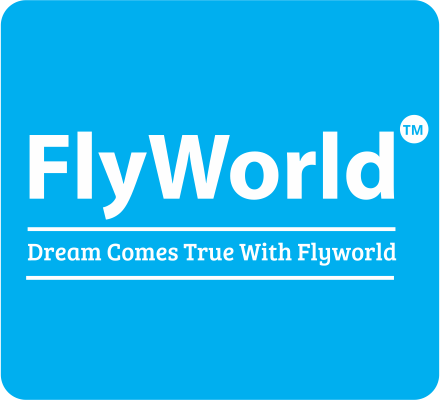The three classes of immigration in Canada and their purpose.
Canada’s immigration goal is to continuously increase immigration levels in order to strengthen the economy, reunite families and provide humanitarian assistance to refugees.
Canada has three classes of immigration: economic class, family class and refugee class.
The economic class involves immigrants who have been selected for their ability to contribute to Canada’s economy, whether it be through their capacity to meet labour market needs, to own or manage a business, to make a substantial investment or create their own employment.
The family class includes immigrants who have been sponsored by a Canadian citizen or permanent resident. The goal is to enable family members and couples to be reunited and live together in Canada. These immigrants are granted permanent resident status based on their relationship with a spouse, partner, parent, grandparent, child or other relative.
The refugee class comprises immigrants who were granted permanent resident status due to the fear of persecution involved with living in their home country based on race, religion, nationality, membership in a particular social group or political opinion. This class also includes persons who have been seriously affected by war or conflict or have suffered a substantial violation of human rights.
Due to Canada’s older population and low birth rate, there are low rates of economic and labour force growth. The low economic growth makes it challenging for Canada to increase the taxes the country needs to spend on social services such as education and healthcare. For this reason, Canada has been increasing its immigration levels to strengthen the country’s economy and fiscal situation.
Each year, the federal government releases a new Immigration Levels Plan which outlines the immigration objectives for the next three years. The plan includes the number and class of immigrants the country hopes to welcome. In 2022, Canada hopes to exceed 430,000 new permanent residents, with nearly 60% of new permanent residents falling under the economic class.
The Economic Class
The most common economic class admissions into Canada come through the federal Express Entry system. Eligible candidates, usually skilled workers, submit their profile and are given a score that is ranked by the Comprehensive Ranking System (CRS). Every two weeks, Immigration, Refugees and Citizenship Canada (IRCC) invites eligible candidates with the highest scores to apply for permanent residence.
The Express Entry system manages three programs, the Federal Skilled Worker Program (FSWP), the Federal Skilled Trades Class (FSTC) and the Canadian Experience Class (CEC).
The FSWP has been the main way Canada welcomes skilled workers from around the world. It uses the CRS, a point-based system that is calculated based on age, education, work experience, language skills and more.
The FSTC is an effort to address Canada’s labor shortages in trades occupations. These candidates may have lower scores since they are not required to prove their level of education, but the IRCC occasionally holds program specific Express Entry draws that invite only FTSP candidates. These successful candidates are usually able to obtain their permanent residence within six months.
Lastly, the CEC is for candidates who have worked in Canada and want to become a permanent resident. This option is for temporary foreign workers and international graduates who want to continue to build their futures in Canada.
The Provincial Nominee Program (PNP) is another leading option to immigrate to Canada as a skilled worker. The purpose of the program is to spread the benefits of immigration across Canada. Consequently, almost all the provinces and territories use the PNP to attract and welcome skilled workers from around the globe to help strengthen the Canadian economy. The only exceptions are Nunavut and Quebec.
The province of Quebec instead has its own selection criteria for economic immigration, which begins with candidates declaring their interest in immigrating to Quebec by submitting an expression of interest (EOI) form.
The Family Class
IRCC also welcomes immigrants through family sponsorship. If you are a Canadian citizen or permanent resident, you can sponsor your foreign national spouse or partner to obtain Canadian permanent resident status. The sponsorship can be done whether the sponsored person lives abroad or in Canada, as couples have the choice between outland and inland sponsorships. As a sponsor, you must be able to support your spouse or partner financially and by providing for the basic needs of that person. The IRCC also requires that you prove that the relationship is genuine.
A Canadian citizen or permanent resident may also sponsor a dependent child to live with them in Canada as a permanent resident. For a child to be eligible for sponsorship, they must be a biological or adopted child of a Canadian citizen or permanent resident, be under the age of 22 and not married or in a common law relationship. Similarly to spousal sponsorships, the sponsor is required to provide for the child’s basic needs.
Additionally, Canadian citizens and permanent residents can sponsor their parents and grandparents to immigrate to Canada. Parents and grandparents who come to Canada under this program receive permanent residence status and may eventually be able to apply for Canadian citizenship. Sponsors must exceed the minimum necessary income level for this program and agree to financially support the sponsored and repay any social assistance benefits paid to the sponsored family members for 20 years. Candidates of this program must also prove that they meet the minimum income requirements.
The Refugee Class
Individuals may immigrate to Canada through the refugee class or for humanitarian purposes.
Resettled refugees are migrants who have been selected by the United Nations Refugee Agency while outside their home country and are granted permanent residency in Canada. Canada provides them with a haven free of persecution, human rights violations or war. In addition, refugees who have landed in Canada may claim asylum and have their claims approved by the Immigration and Refugee Board. Those who do not fall under the aforementioned stream but who make a compelling case on humanitarian and compassionate grounds may be granted permanent resident status.



